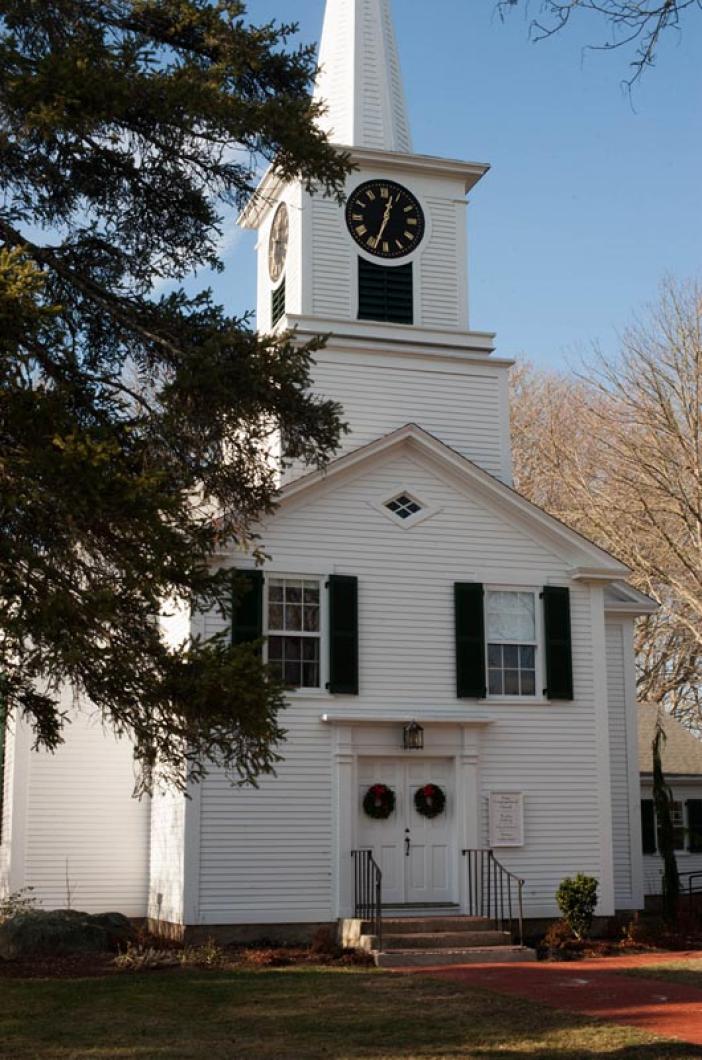Ten years ago, my husband and I took a break from New York city to spend a winter on Martha’s Vineyard and care for his grandmother who was in hospice care. The idea that some day we would have two children and be living on the Island year-round never occurred to us. This was a temporary stay in between other life experiences.
My most significant memory of that winter on the Island was the darkness. And I remember it was in the midst of this darkness that for the first time I truly grasped the power of the Advent season. For the darkness, and my isolation, led me to long for the light of Christmas in a way I never knew before. On Christmas we celebrate the birth of a babe who would be a light in the darkness, showing people the way of righteousness, the way of mercy, peace and justice.
The liturgical season of Advent begins four Sundays before Christmas, which usually means it starts right after Thanksgiving. I like to imagine that Advent is a pilgrimage, an opportunity to travel deep inside ourselves. And it is good that we can begin our rigorous journey fat from Thanksgiving. Hopefully, the sustenance of food and family can carry us through the challenges of this pilgrimage.
When we embark on our Advent pilgrimage we are heading toward Christmas, a familiar destination. But the patterns and traditions of Christmases past may tug us too quickly to that day, not allowing us to be awake to what is distinctive about the here and now. Christmas may occur in the shadow of a loved one’s death or a dreaded diagnosis. Christmas may be celebrated alongside news of a wedding proposal or a new baby. Some Christmases are noisy and jubilant, others shimmering and reflective. Some are white or downright tropical. Sometimes they are simply blue.
The Advent pilgrimage can be equally as diverse so it is important to look at the context of your pilgrimage — the familial, social and political context — in order to stay awake to its distinctiveness and the particular lessons that may be offered this and every year. This kind of awareness helps make Christmas come alive, allowing it to be experienced anew each year.
The Advent season begins in darkness. The liturgical calendar coordinates well with the change of season. As our days get shorter here in the Northern Hemisphere, it makes sense that our religious tradition asks us to sit in the darkness. This darkness is layered in meaning. The darkness can refer to the human condition of being in the dark, or unenlightened, or not seeing the full picture of one’s life in this world. Personal suffering or our deep concern for the state of the world can add to the darkness. But rather than turn away from the pain, the darkness is something to be embraced, so that we cultivate a longing for light.
We prepare for and anticipate the birth of Jesus, much the way a pregnant mother prepares for and anticipates the arrival of her newborn. We are to clear away the clutter of our lives, and focus on what is most important, loving God and loving neighbor. We make room for God by slowing down, by finding time in silence and by increasing our compassion for others.
This year, to help others on their pilgrimages, we experimented with something new at the First Congregational Church of West Tisbury. We created three contemplative worship services, which we called Advent Evensong, to offer people the spiritual space to embrace the darkness of the season, to honor the complexity of emotions that people feel during the holidays, and to move from the darkness to the light.
The worship services took people on a spiritual journey that complimented the Advent journey. The first service offered the space and time to take an inventory. What is happening in your life this year that is distinctive? What are the experiences or feelings you are having as Christmas approaches? The second service was very dimly lit and we guided people in a meditation that journeyed from darkness to light. We focused on the Divine Light within us and encouraged it to grow as we meditated. Then we sent its rays spilling out of us, to our neighbors in the pews, and out of the walls of the church. Did you feel it?
The final service focused on healing and transformation. We considered the powerful message of Christmas, that God has come down to join us and share in our suffering. We listened to the words of Mary’s song, the Magnificat, which speaks to the transformation of our world. We asked, can you welcome God into your body and into your life, healing you, empowering you, renewing you and comforting you? Then we invited people to light candles of hope and receive the laying on of hands, if they wished. I believe we were all changed by the experience.
Christmas is still a few days away. It’s not too late to jump off the runaway train to Christmas and instead amble like a pilgrim. Slow down, take an inventory of your life and cultivate a longing for light, for goodness and righteousness. Like Mary, it is still possible for Christmas to be born within you.







Comments (2)
Comments
Comment policy »